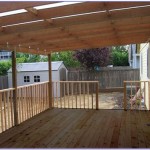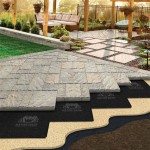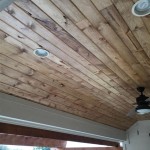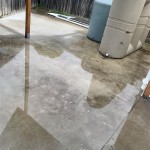How to Repair a Concrete Patio Table
Concrete patio tables offer a durable and aesthetically pleasing addition to outdoor spaces. Their substantial weight provides stability, and their inherent resistance to the elements makes them a popular choice for patios, gardens, and decks. However, even with their robust construction, concrete patio tables are susceptible to damage over time. Cracks, chips, stains, and general wear and tear can detract from their appearance and, in some cases, compromise their structural integrity. Recognizing the common issues and understanding the proper repair techniques are essential for maintaining the longevity and beauty of these outdoor furnishings.
Repairing a concrete patio table is a feasible and often cost-effective alternative to replacement. The process generally involves assessing the damage, preparing the area, applying appropriate patching or repair materials, and finishing the surface to blend seamlessly with the existing concrete. The specific methods and materials required will vary depending on the type and severity of the damage. This guide will outline the common types of damage encountered in concrete patio tables and provide detailed instructions on how to address them using readily available tools and materials.
Identifying Common Concrete Patio Table Problems
Before embarking on a repair project, a thorough inspection of the concrete patio table is crucial. Accurate identification of the problem's nature and extent will ensure the selection of the correct repair strategy and materials. Some of the most common issues encountered include:
Cracks: Cracks in concrete can range from hairline fractures to significant structural breaches. Hairline cracks are typically superficial and may only require cosmetic repair. Wider cracks, especially those that extend through the entire thickness of the concrete, indicate a more serious issue and may necessitate structural reinforcement. Cracks can be caused by thermal expansion and contraction, settling of the ground beneath the table, or impact damage. The pattern and location of the cracks are important indicators of the underlying cause.
Chips and Spalls: Chips and spalls refer to the breaking away of small pieces of concrete from the surface. This type of damage is often caused by impact, freeze-thaw cycles, or the corrosion of embedded reinforcing steel (if present). Chips are generally smaller and shallower than spalls. Spalling involves the detachment of larger, thicker pieces of concrete and may expose the underlying aggregate or reinforcing steel. Addressing chips and spalls promptly is important to prevent further deterioration of the concrete.
Stains: Concrete is porous and susceptible to staining from various sources, including spilled food and beverages, plant matter, and environmental pollutants. Stains can be unsightly and difficult to remove. The type of stain will determine the appropriate cleaning and treatment methods. Organic stains may respond to enzymatic cleaners, while mineral stains may require acidic solutions. In some cases, persistent stains may necessitate surface resurfacing.
Surface Degradation: Over time, the surface of a concrete patio table can become rough, pitted, or eroded due to weathering, abrasion, and chemical exposure. This degradation can affect the table's appearance and make it more susceptible to staining and further damage. Surface degradation may require resurfacing with a concrete overlay or sealant to restore a smooth and protective finish.
Joint Deterioration: Some concrete patio tables are constructed with multiple sections joined together. The joints between these sections can deteriorate over time, leading to gaps, cracks, and uneven surfaces. This deterioration can be caused by expansion and contraction, water infiltration, and the breakdown of the joint filler material. Repairing joint deterioration involves cleaning out the old filler material and replacing it with a new, flexible joint sealant.
Materials and Tools Required for Concrete Repair
Having the right tools and materials readily available is vital for efficient and effective concrete repair. The specific items needed will depend on the type and extent of the damage being addressed. However, the following represents a general list of commonly required supplies:
Safety Gear: Safety glasses are essential to protect the eyes from dust and debris. Work gloves will protect hands from sharp edges and chemical irritants. A dust mask or respirator is recommended when working with dry concrete mixes or grinding tools.
Cleaning Supplies: A stiff-bristled brush, a scrub brush, and a pressure washer (optional) are useful for cleaning the concrete surface. Concrete cleaner or degreaser will help remove dirt, grease, and stains. A wire brush can be used to remove loose concrete and rust from reinforcing steel.
Mixing Tools: A mixing tub or bucket is needed for preparing concrete patching compounds. A trowel or margin trowel is used for applying and smoothing the patching material. A mixing drill with a paddle attachment can be used for larger batches of patching compound.
Patching Materials: Concrete patching compound is specifically formulated for repairing cracks, chips, and spalls in concrete. It is available in various formulations, including rapid-setting and fiber-reinforced options. Epoxy concrete repair products provide a high-strength, durable repair for more significant damage. Concrete crack filler is designed for sealing cracks and preventing water infiltration.
Surface Preparation Tools: A cold chisel and hammer can be used to remove loose or unsound concrete. A concrete grinder or sander with diamond grinding pads is used for smoothing rough surfaces and feathering edges. A wire brush attachment for a drill can be used to remove rust from reinforcing steel.
Finishing Tools: A sponge is used for dampening the concrete surface during finishing. A float or sponge float is used for creating a smooth, uniform texture. A brush can be used for creating a textured finish to match the existing concrete. Concrete sealant is applied to protect the repaired area from water damage and staining.
Adhesive and Bonding Agents: Concrete bonding adhesive is used to improve the adhesion of the patching material to the existing concrete. It is especially useful when repairing large or deep areas. Epoxy bonding agents provide superior adhesion and are often used in conjunction with epoxy repair products.
Step-by-Step Repair Techniques
Once the damage has been assessed and the necessary tools and materials have been gathered, the actual repair process can begin. The following outlines the general steps involved in repairing common types of damage to concrete patio tables:
Repairing Cracks:
Preparation: Clean the crack thoroughly with a wire brush to remove loose debris and dirt. If the crack is wide or deep, use a cold chisel and hammer to widen it slightly to create a V-shaped groove. This will allow the patching material to bond more effectively.
Application: Apply a concrete bonding adhesive to the inside of the crack, following the manufacturer's instructions. Allow the adhesive to become tacky. Mix the concrete crack filler or patching compound according to the manufacturer's instructions. Use a trowel or putty knife to force the patching material into the crack, ensuring it fills the entire void. Overfill the crack slightly to allow for shrinkage.
Finishing: Allow the patching material to cure according to the manufacturer's instructions. Once cured, use a concrete grinder or sanding block to smooth the surface and feather the edges to blend with the surrounding concrete. Apply a concrete sealant to protect the repaired area from water damage.
Repairing Chips and Spalls:
Preparation: Clean the damaged area thoroughly with a wire brush to remove loose concrete and debris. If necessary, use a cold chisel and hammer to remove any unsound concrete surrounding the chip or spall. Undercut the edges of the damaged area slightly to create a mechanical interlock for the patching material.
Application: Apply a concrete bonding adhesive to the prepared area, following the manufacturer's instructions. Allow the adhesive to become tacky. Mix the concrete patching compound according to the manufacturer's instructions. Use a trowel to apply the patching material to the chip or spall, building it up in layers if necessary to fill the void. Compact the patching material to eliminate air pockets.
Finishing: Allow the patching material to cure according to the manufacturer's instructions. Once cured, use a concrete grinder or sanding block to smooth the surface and feather the edges to blend with the surrounding concrete. Use a float or sponge float to create a smooth, uniform texture. Apply a concrete sealant to protect the repaired area from water damage.
Removing Stains:
Preparation: Identify the type of stain causing the discoloration. Different types of stains require different cleaning methods. For organic stains, try using a solution of water and dish soap or an enzymatic cleaner. For mineral stains, try using a diluted solution of muriatic acid (always wear appropriate safety gear when handling acids).
Cleaning: Apply the cleaning solution to the stained area and scrub vigorously with a stiff-bristled brush. Allow the solution to dwell for a few minutes to penetrate the stain. Rinse the area thoroughly with water.
Treatment: If the stain persists after cleaning, you may need to use a concrete stain remover specifically designed for the type of stain you are dealing with. Follow the manufacturer's instructions carefully. In some cases, persistent stains may require surface resurfacing with a concrete overlay or sealant.
Sealing and Protection:
After completing any repair, it's essential to protect the concrete patio table from future damage. Applying a concrete sealant will help to repel water, prevent staining, and protect the surface from weathering. Choose a sealant that is specifically designed for outdoor concrete surfaces. Follow the manufacturer's instructions carefully when applying the sealant. Consider applying multiple coats of sealant for added protection.
Regular cleaning and maintenance will also help to prolong the life of the concrete patio table. Sweep or hose off the table regularly to remove dirt and debris. Clean up spills promptly to prevent staining. Consider covering the table during periods of inclement weather to protect it from the elements.
By following these instructions, it's possible to effectively repair and maintain a concrete patio table, extending its lifespan and preserving its aesthetic appeal for years to come.

Resurfacing A Concrete Patio With Decorative Coatings Network

Diy Patio Table Top Fixing A Broken On Budget

Resurfacing A Concrete Patio For Budget Diy Makeover Fab Everyday

Ed Concrete See How We Repaired Our Gross Patio 2024

Ed Concrete See How We Repaired Our Gross Patio 2024

Stamped Concrete Overlays On Old

How To Repair S In Stamped Concrete Patios Doityourself Com

5 Ways To Prevent S In Concrete And 1 Easy Fix Bob Vila

How To Repair Ed Concrete

Don T Replace Your Uneven Patio Fix It With Concrete Jacking Lift Right
Related Posts








